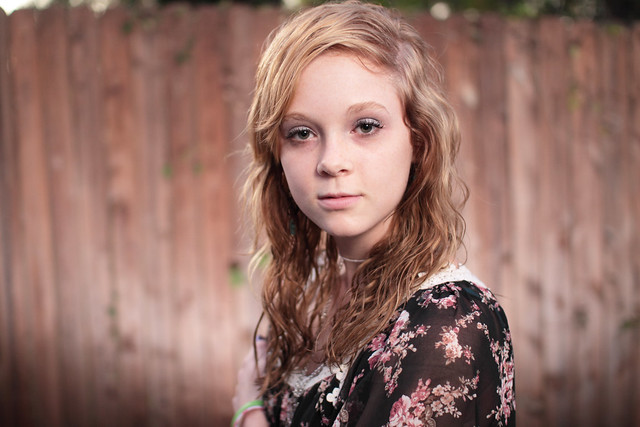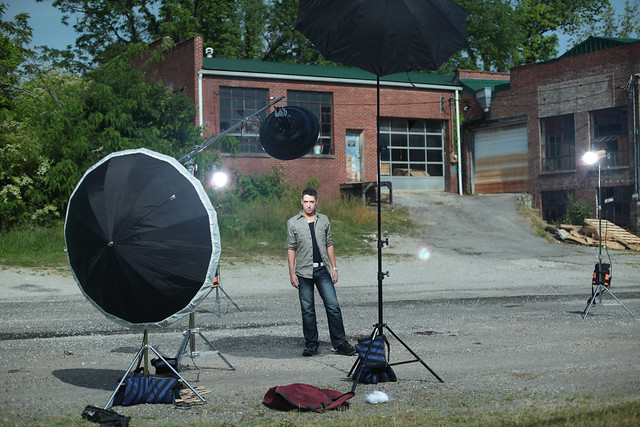Hi all,
Been a while since I was around here (well, actually i'm here every day, just never say much). Anyway, I'm looking for some advice for buying into a lighting system.
Firstly, where I'm at isn't much. I've got the 7D and a 430EX mk1, and a cheap 4x6" softbox that was $10 on ebay from china. I've also got a massive 5000W 1970s-style monolight about 10" long with barn-doors the length of it. It's hot and sometimes blows fuses (and will probably one day catch fire), so I try not to use it.
Where do I want to be? Well, I suppoose being on the level of Sean is a bit unrealistic without quitting my job and focussing myself full time (and even then I'll probably never be that good, let's face it). But somewhere along that path would be nice.
The reason I'm asking now is that a colleague at my work approached me, "hey, you've got a good camera, can you take some modelling shots for me?" My first answer was that I may have a decent enough camera and more lenses than will fit in my car, but I also said that my lighting kit was rather lacking, so here I am for advice.
Basically, her daughter is getting into fashion design and wants some shots done, at her house, so probably just full-body white-background-type shots (I'll have to check if she's got backgrounds or sheets). I'm willing to do it for free for my own enjoyment and learning, we'll strike some sort of deal for our mutual benefit. Either way, for now, I'd like to limit spending to a few hundred, maybe $500 or so.
So, the question. Flashes or monolights? Or mix? From what I've gathered, there's always pros and cons of each. Here's some, but feel free to add to the list:
Pros for flashes:
- I've already got an optical master (7D).
- Small, light, portable, easily used for field-work.
- I've already got a few eneloops.
Cons for flashes:
- I'll be stuck with the 7D, otherwise I can't use any of my film cameras (although I probably won't) except on manual-mode, can't chimp, (and I don't have a flash-meter). Also any future digital purchase will be FF so won't have an optical master either. (At least, not without further expense of a master-unit). Still, the 7D is a good unit with 1/250s sync, and these are only going on the web, no need for FF IQ to make 20x30" prints (yet).
- From what i've heard, optical triggering is hard with bigger Softboxes because they sit fully inside, they don't have the receiver sticking out the back. (Unless someone can give options on which do?)
Pros for monolights:
- No need for chimping or using (and buying and learning) a flashmeter, I can see the scene as intended. This is a big plus for me. (I just bought myself a Gossen Digisix off fleabay for my new 4x5" camera, maybe I should have gotten the DigiFlash version instead).
Cons for monolights:
- Hot for the model (depending on setup, of course).
- Need a long extension lead or batteries (this shoot may be indoors, but I'd like to do outdoorsy-style shots later)
- Big and heavy and not so portable (but at least harder to steal).
So what direction to go? Should I stick with flashes and buy a few more, maybe invest in a PocketWizard or other radio-trigger, buy some soft-boxes and stands?
Or is it worth going the (in my mind now, better, feel free to change my mind) monolight-route, getting some decent ones that take AC and can take car-batteries when needed, getting a few other reflectors and/or beauty-dishes (I'm not sure exactly what is a beauty-dish, but I likes the sound of it, can I use one with a flash?).
Getting lights that I can dial-down when needed is pretty mandatory (I'd assume it's a standard feature, but maybe not on the cheapest ones?).
Or mix and match, is that a valid option? Will there be problems mixing warmer lights and cooler flashes? Metering will probably still take chimping or a flashmeter. Is there even an issue in colour-temps mixing different brands/models of flash (like YongNuo etc)?
Either way, can anyone give good recommendations of things, like flashes/monos, stands, reflectors, etc?
I'm also considering a future Vari-ND for dialing-down the background to make the subject pop more (and seeing as it'll be expensive anyway, I may as well get an 86mm good-brand and never need another). I probably won't need that for indoor white-backgrounds, but eventually if/when I do outdoor shoots.
Lenses I've got a few hundred choices so don't need much advice there or I'll get GAS again. I'll try the 'character' lenses like 50/1.4 Tak and 80/1.5 Cyclop, maybe I can borrow my friend's 50L, or in my cupboard there's any number of other lenses I've got in portrait-range (EF40/2.8, Ef85/1.8, 85/2.8 Planar, Ef100/2, 100/2.8 Biometar, EF70-300L). For the first shoot(s) I'll just bring a few bags full and see what works...



 Reply With Quote
Reply With Quote





